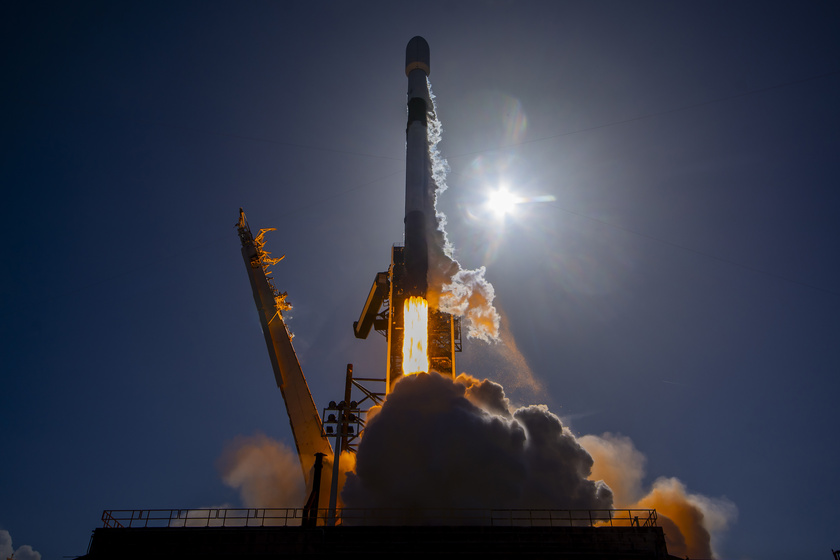The SpaceX Falcon 9 at 2104 UTC on July 1, launched Meteosat Third Generation Sounder (MTG-S1) satellite to geosynchronous transfer orbit from Launch Complex 39A (LC-39A) at Kennedy Space Center. MTG-S1 is the second in a six-satellite series developed by the European Organization for the Exploration of Meteorological Satellites (EUMETSAT) alongside European Space Agency(ESA).
Falcon 9's first stage(B1085) came back to Earth as planned about 8.5 minutes after liftoff, touching down on the SpaceX drone ship "Just Read the Instructions," which was stationed in the Atlantic Ocean. Meanwhile the rocket's upper stage continued spaceward, deploying MTG-S1 about 35 minutes after liftoff.
The satellite will now make its way to geostationary orbit (GEO), which lies 35,786 kilometers above Earth. At this altitude, orbital speed matches Earth's rotational speed, meaning satellites there "hover" over the same patch of the planet continuously. This makes GEO a popular destination for weather and reconnaissance spacecraft.
MTG-S1 represents Europe’s first hyperspectral sounding instrument placed in GEO. It is the second of the MTG satellites to take flight. The first was MTG-I (MTG Imager), which launched atop an Arianespace Ariane 5 rocket in December 2022.
The Copernicus Sentinel-4 instrument, which will monitor air quality over Europe, sits on board the MTG-Sounder (MTG-S) satellite. Copernicus Sentinel-4 is part of the European Union's Earth-observation program.
The instrument is an ultraviolet, visible, near-infrared light (UVN) spectrometer, which will monitor air quality over Europe and North Africa every hour, according to ESA officials.
"The spectrometer delivers high-resolution data on gases that affect the quality of the air we breathe, including a wide range of atmospheric trace gases and pollutants such as nitrogen dioxide, ozone, sulfur dioxide and formaldehyde," they wrote in the mission description.
"The mission will complement the Sentinel-5 and Sentinel-5P missions, which provide daily observations of the Earth from their polar orbits."
After undergoing a checkout period, MTG-S1 will use its infrared sounder instrument "to capture data on temperature, humidity, wind and trace gases that are used to generate 3D maps of the atmosphere, improving the accuracy of MTG's weather prediction," ESA officials said in a mission description.
The satellite "will provide coverage of Europe and part of northern Africa on a repeat cycle of 15 minutes, providing meteorologists with a complete weather picture of the region, complementing data on cloud formation and lightning from MTG-I," they added.
Today's launch and landing was the ninth for the Falcon 9 booster B1085, according to a SpaceX mission description. Among the booster's previous flights were the Fram2 private astronaut mission, the Crew-9 flight to the International Space Station for NASA and a January 2025 launch that sent two private landers toward the moon: Firefly Aerospace's Blue Ghost and ispace's Resilience.















